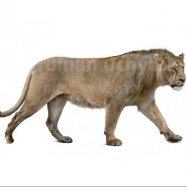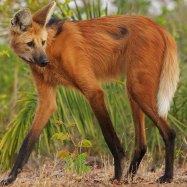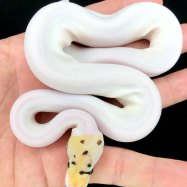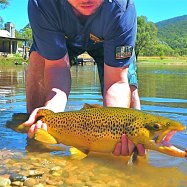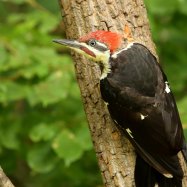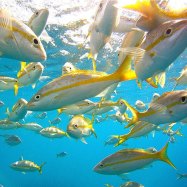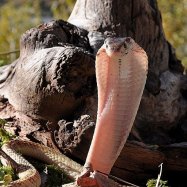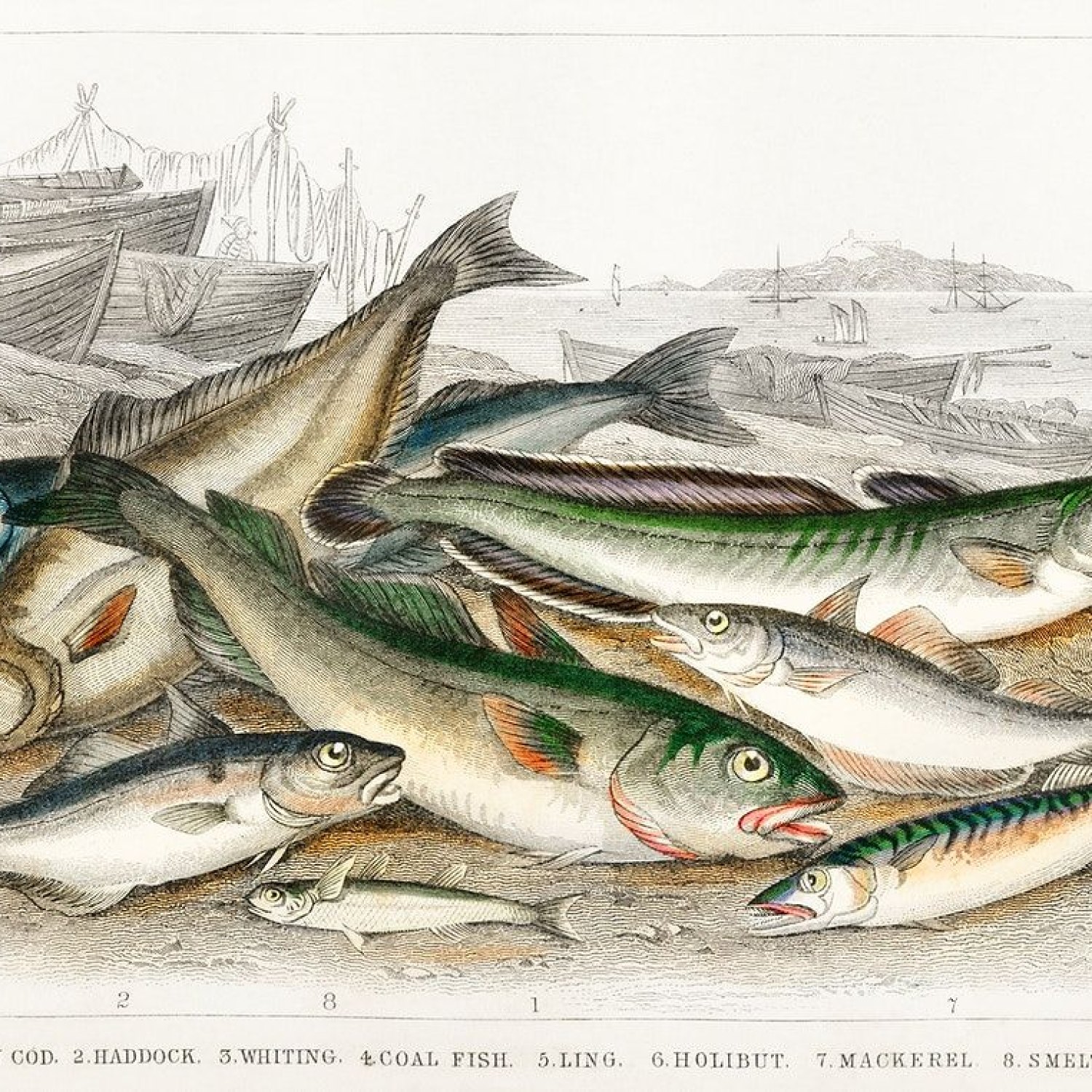
Haddock
30 to 80 centimeters
Haddock, a popular saltwater fish in the cod family, can be found in coastal regions with depths of 40 to 200 meters. Their average size ranges from 30 to 80 centimeters, making them a desirable catch for recreational and commercial fishermen. Known for their tasty white flesh and distinctive black lateral line, Haddock is a versatile and nutritious seafood option. Next time you're by the coast, keep an eye out for these delicious creatures!
Animal Details Summary:
Common Name: Haddock
Kingdom: Animalia
Habitat: Marine
The Fascinating World of Haddock: A Marvel in the North Atlantic
There is a mysterious creature that inhabits the frigid waters of the North Atlantic, considered by many as one of the most delicious and commercially important fish in the world – the haddock. This fish is known for its distinct dark grey color on the upper body and pale grey on the lower body, making it easily recognizable and sought after in the fishing industry. But beyond its appearance and taste lies a world of wonder that is waiting to be explored.Let us delve into the mesmerizing world of this fascinating creature and discover its unique features, behavior, and habitat Haddock.
The Classification of the Haddock
Before we dive into the depths of its world, let us first understand the proper classification of the haddock. Its scientific name is Melanogrammus aeglefinus, derived from the Greek words “melas” meaning black, “gramma” meaning line, and “aeglefinus” which means haddock. This scientific name perfectly describes the fish's dark lines on its body, making it stand out in the sea.The haddock belongs to the Kingdom Animalia, the Phylum Chordata, and the Class Actinopterygii – meaning it is an animal with a vertebral column and belonging to the major class of ray-finned fishes. It is also part of the order Gadiformes, which includes cod, pollock, and hake, and the family Gadidae, which is the largest family of marine fishes.
Habitat and Distribution
The haddock is a marine creature that can be found in cold waters, particularly in the North Atlantic. This vast body of water includes various locations such as the United States' east coast, Canada, Iceland, Greenland, and parts of Europe, including Norway, the origin country of the haddock.This fish is often found in coastal regions, where the water is not too deep and not too shallow. They thrive in areas with rocky bottoms and moderate water currents, making them adaptable to different depths and habitats Hermit Crab.
Appearance and Body Shape
One of the distinguishing features of the haddock is its distinct coloration. As mentioned earlier, the upper body is dark grey, while the lower body is pale grey. This coloration acts as camouflage, making it difficult for predators to spot them from above or below.The haddock has a cod-like body with a slightly elongated shape, giving it a sleek and streamlined appearance. This body shape allows them to swim efficiently and helps them maneuver through the water to catch their prey.
Feeding Habits
Haddocks are carnivorous creatures, meaning they primarily feed on other animals. They have a varied diet, which includes cod, herring, crustaceans, and mollusks. These fish are opportunistic hunters, meaning they will eat almost anything they can find in their habitat. They are also known to be voracious eaters and can consume up to 5% of their body weight each day.One of the unique feeding habits of haddock is their ability to change their diet based on the availability of food in their habitat. For example, if there is a shortage of their usual prey, they can switch to a different food source without any problems.
Social Behavior and Reproduction
Throughout most of their lives, haddock prefer to live solitary lives, except during the breeding season. During this time, they gather in large groups called shoals for mating and spawning purposes.Female haddocks can produce up to 1 million eggs during the breeding season, which usually happens during the late fall or early winter. These eggs then float in the water until they hatch into larvae after 10 to 12 days. It takes around 3 to 4 years for haddocks to reach sexual maturity and join the breeding shoals.
Their Importance to Humans
The haddock has been an essential part of human diet and culture for centuries. It is considered one of the most popular and commercially important fish in the world, particularly in countries like the United Kingdom, Germany, and the United States. Its delicate and mild flavor makes it a favorite among seafood lovers, and it is a popular choice for fish and chips.Moreover, haddock is also a valuable source of income for fishermen, especially those living in coastal communities. The fishing industry for this species is highly regulated to ensure its sustainability, as overfishing can have a severe impact on the population.
Threats and Conservation Efforts
Despite being an important food source and economic resource, the haddock population has been declining due to overfishing and habitat destruction. Pollution, climate change, and oil spills also pose a threat to their survival.Thankfully, there are ongoing efforts to protect and conserve haddock populations worldwide. These include fishing regulations, monitoring and research programs, and habitat protection initiatives. These efforts are vital in maintaining the delicate balance of the marine ecosystem and ensuring a sustainable future for this unique species.
Interesting Facts about Haddock
- The largest haddock ever caught weighed a whopping 44 pounds and was caught in Norway.- Haddock meat turns from white to opaque when cooked.
- The term "haddock" comes from the Old English word "hadduc", which means little gatekeeper, referencing the fish's prominent gate-like mouth.
- Haddock is a member of the Cod family, and its meat is often used as a substitute for cod in many recipes.
- The bones of haddock are much softer than those of other fish, making it easier to eat compared to other species.
The Haddock: A Beautiful, Mysterious Creature
In conclusion, haddock is more than just a delicious fish – it is a marvel of nature, adapted to thrive in the challenging environment of the North Atlantic. Its unique features, adaptable behavior, and crucial role in the marine ecosystem make it a fascinating creature worthy of our admiration and protection.So the next time you enjoy a plate of fish and chips, or any dish that includes haddock, take a moment to appreciate the journey this fish has taken to reach your plate. And remember, with responsible fishing practices and conservation efforts, we can ensure that this beautiful creature will continue to grace our tables for generations to come.

Haddock
Animal Details Haddock - Scientific Name: Melanogrammus aeglefinus
- Category: Animals H
- Scientific Name: Melanogrammus aeglefinus
- Common Name: Haddock
- Kingdom: Animalia
- Phylum: Chordata
- Class: Actinopterygii
- Order: Gadiformes
- Family: Gadidae
- Habitat: Marine
- Feeding Method: Carnivorous
- Geographical Distribution: North Atlantic
- Country of Origin: Norway
- Location: Coastal regions
- Animal Coloration: Dark grey on the upper body, pale grey on the lower body
- Body Shape: Cod-like body with a slightly elongated shape
- Length: 30 to 80 centimeters
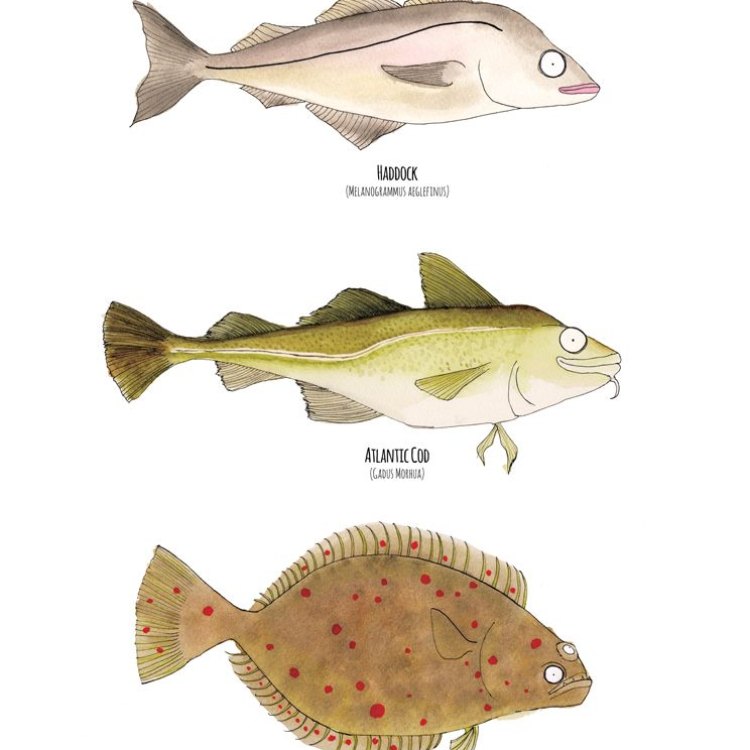
Haddock
- Adult Size: 60 centimeters
- Average Lifespan: 10 to 15 years
- Reproduction: Sexual
- Reproductive Behavior: External fertilization
- Sound or Call: Not known
- Migration Pattern: Migratory
- Social Groups: Schools
- Behavior: Active predator
- Threats: Overfishing, habitat destruction
- Conservation Status: Least Concern
- Impact on Ecosystem: Important prey species
- Human Use: Commercial fishing, culinary use
- Distinctive Features: Black lateral line, black lateral blotches
- Interesting Facts: The black coloration on their upper body helps them blend with the dark ocean depths
- Predator: Sharks, seals, larger fish
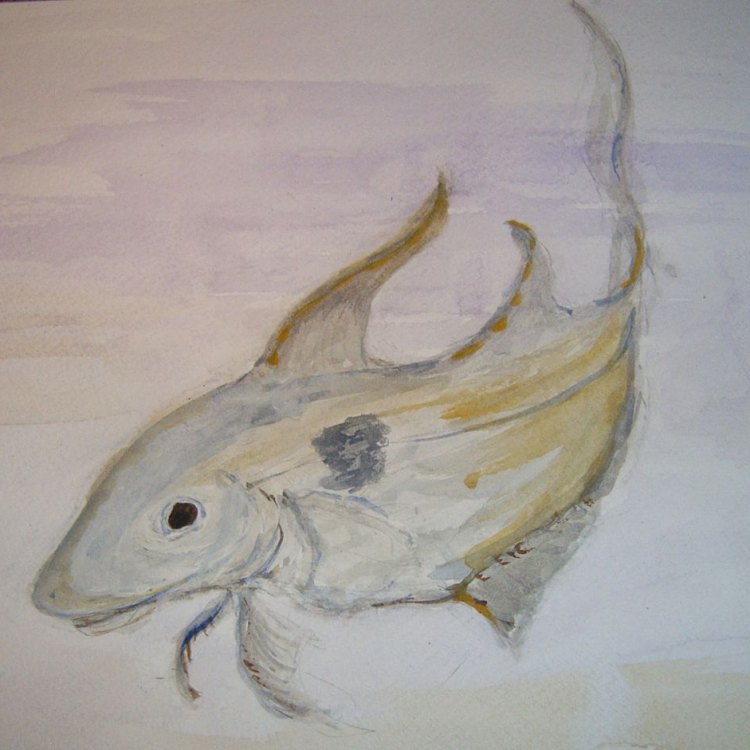
Melanogrammus aeglefinus
The Mighty Haddock: An Active Predator of the Ocean Depths
Haddock, scientifically known as Melanogrammus aeglefinus, is a species of fish found in the cold, deep waters of the North Atlantic Ocean. They are closely related to cod and other species of whitefish. These powerful and active predators are widely known for their commercial value and culinary use, making them a vital part of the ocean ecosystem and human society.Let’s dive deeper into the unique features and interesting facts of the mighty haddock PeaceOfAnimals.Com.
Size and Lifespan
On average, haddock can grow up to 60 centimeters in length, with the largest ones reaching a whopping 100 centimeters. Despite their size, they are relatively short-lived, with an average lifespan of 10 to 15 years. This makes them a fast-maturing species, as they can reproduce as early as two years old.Reproduction and Behavior
Haddock follows a sexual reproduction pattern, with males and females coming together to spawn during the spring and summer months. During this time, the females release thousands of eggs into the water, while the males fertilize them externally.After the eggs hatch, the juvenile haddock, known as fry, will float near the surface for a while before descending to the ocean floor. During this time, they are extremely vulnerable to predators, including larger fish and marine mammals.
As adults, haddock are active predators, constantly on the lookout for their prey. They primarily feed on smaller fish, crustaceans, and squid Hobo Spider. Their sharp teeth and powerful jaws allow them to catch their prey with ease, making them an important part of the ocean food chain.
Schools and Migration
Like many other fish species, haddock also form schools for protection and efficient hunting. This means they travel together in large groups, sometimes consisting of thousands of individuals.Haddock follow a migratory pattern, moving between different depths of the ocean. During the winter months, they migrate to deeper, warmer waters, while in the summer, they move to shallower waters. This pattern helps them find optimal food sources and avoid harsh winter conditions.
Threats and Conservation Status
Sadly, haddock populations are facing multiple threats, mainly from human activities. Overfishing is the biggest threat to their existence, as they are a popular commercial fish species due to their delicate, white flesh.Habitat destruction also poses a significant risk, as industrial activities like bottom trawling can damage their fragile ocean habitat. Climate change is also a significant concern, as it can disrupt haddock's migratory patterns and affect their prey availability.
Despite these threats, haddock is currently listed as "Least Concern" on the IUCN Red List of Threatened Species. However, continuous monitoring and conservation efforts are crucial to ensuring their long-term survival.
Importance to Ecosystem and Human Use
Haddock plays a crucial role in the ocean ecosystem, serving as an important prey species for larger predators like sharks, seals, and other fish. They are also a vital food source for humans, with their delicate and mild-tasting flesh making them a popular choice in culinary dishes.In addition to their commercial use, haddock is also used for scientific research, providing valuable insights into the ocean's health. DNA studies on haddock have helped scientists better understand the relationship between different fish species and their evolutionary history.
Distinctive Features and Interesting Facts
One of the most distinctive features of haddock is their black lateral line and lateral blotches. This coloration serves as camouflage, helping them blend with the dark depths of the ocean where they reside. This makes it difficult for predators to spot them while they hunt for their prey.Interestingly, the black coloration is not always present in haddock. It only develops once they reach a certain depth, indicating that it may serve as a protective mechanism against predators in their deep-sea habitat.
Another unique fact about haddock is that they do not have any known calls or sounds. This is because they live in the dark and noisy ocean depths, where sound does not travel well. They rely on their keen sense of sight and smell to find prey and communicate with other haddock in their schools.
In Conclusion
Haddock, with their distinctive features and interesting behavior, are a fascinating species. They are not only important for maintaining the balance of the ocean ecosystem but also play a significant role in human society. However, their existence is under threat, highlighting the need for sustainable fishing practices and conservation efforts to ensure their survival for generations to come.So, the next time you enjoy a delicious haddock dish, remember to appreciate the mighty predator of the ocean depths that it once was.
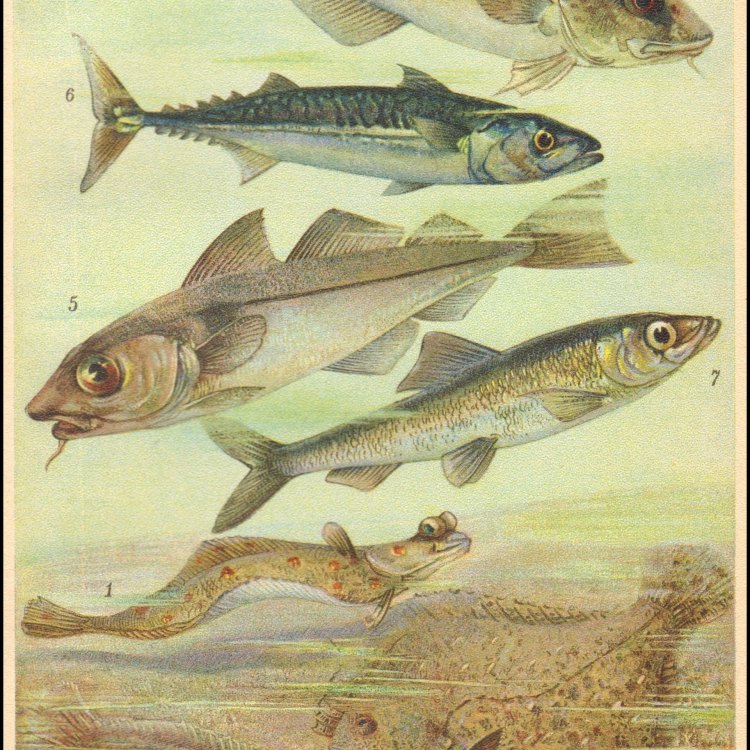
The Fascinating World of Haddock: A Marvel in the North Atlantic
Disclaimer: The content provided is for informational purposes only. We cannot guarantee the accuracy of the information on this page 100%. All information provided here may change without prior notice.

